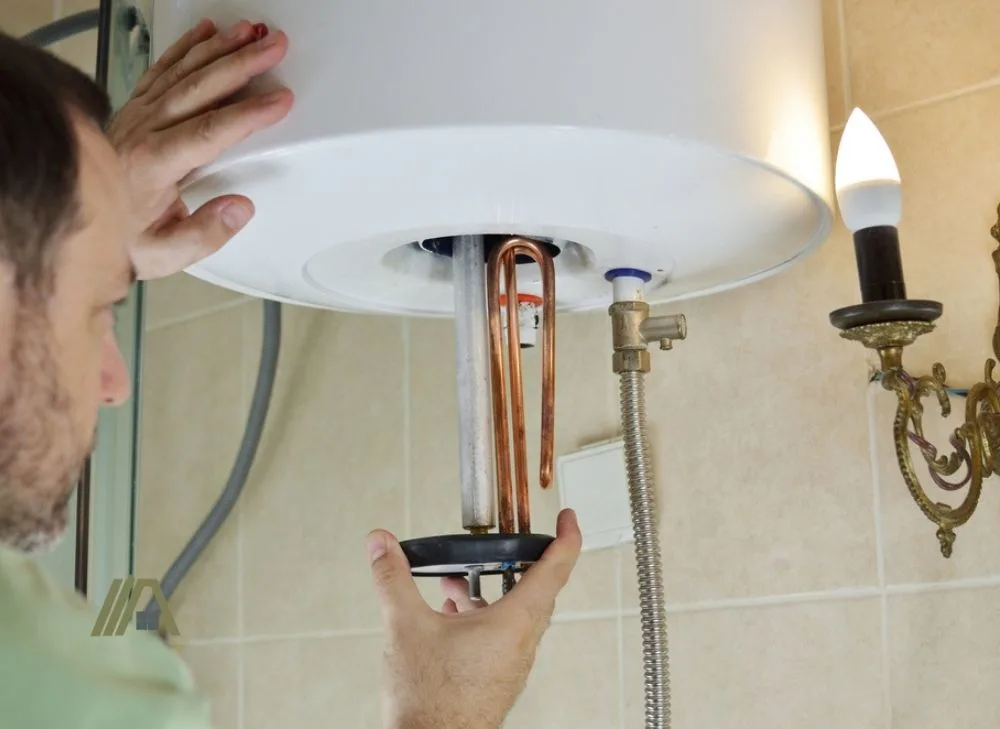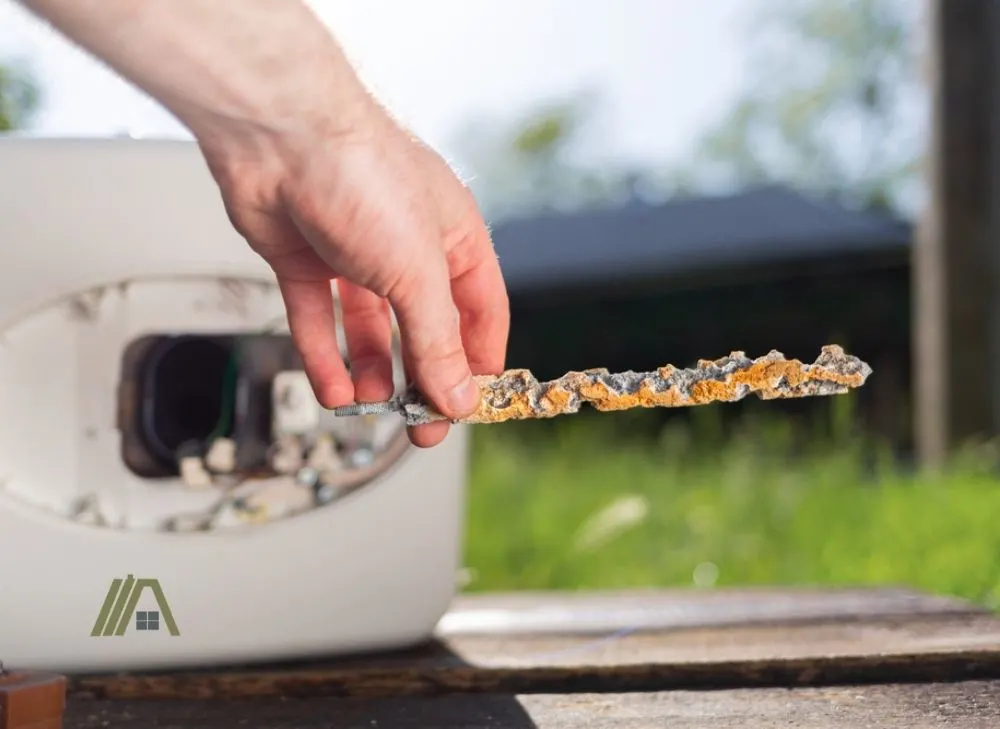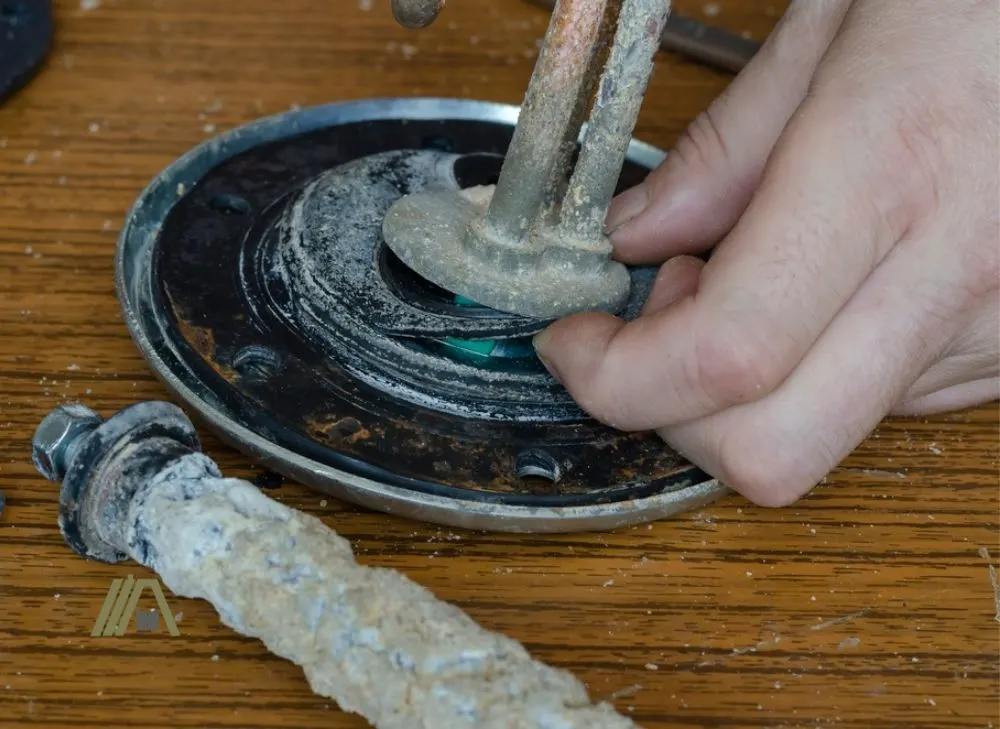An anode rod is a critical piece of equipment with the power to significantly increase the longevity of your water heater. Additionally, an anode rod has the ability to improve your water quality and eliminate that unpleasant rotten egg smell.
All things considered, you can’t go wrong investing in an anode rod. However, it’s important to further understand how certain factors, such as rod length, impact the performance of your anode rod and water heater.

Anode rods should be about 2" shorter than the water heater tank. This ensures that it is big enough to provide sufficient protection to the tank and also means that it will last as long as possible. This is not a strict rule but it is a good guideline. Length is less important with powered anode rods.
Different Lengths Fit Different Water Heaters
Water heaters come in various sizes to be suitable according to your living situation.

Typically, water heaters increase in height when they increase in volume. This means that larger water heaters are taller and require a longer anode rod to ensure that there are no areas of the tank that will corrode as a result of being too far away from the anode rod.
On the other hand, smaller water heaters tend to be shorter, so the anode rod won’t need to be as long.
Essentially, the most important thing to remember is that the length of the anode rod will ultimately be determined by the water heater’s size. A good rule of thumb to keep in mind is that you want your anode rod to run from the bottom of the tank all the way to the top.
Length Is More Important for Sacrificial Rods
There are two basic types of anode rods: sacrificial anode rods and non-sacrificial powered anode rods. Sacrificial anode rods rely on their material to degrade in order to protect the inner lining of the water heater. In comparison, powered anode rods do not need to degrade to do their job.

Powered anode rods do not degrade because they utilize electrical pulses to remove the corrosive minerals from the interior of the water tank. This type of anode rod is non-sacrificial, meaning it does not require replacement. Additionally, the use of electrical pulses makes the length less crucial to the anode’s proficiency.
Sacrificial anode rods are typically made of magnesium, aluminum, or zinc. The length of these rods is very important because the more of this metal that is present, the more metal is available to react with the corrosive elements in water (instead of them reacting with the water heater tank).
Short Anodes Won’t Last as Long
Since sacrificial anode rods, like their name implies, degrade in order to protect the inner lining of the water heater, a shorter anode rod will not last as long. The longer the anode rod, the more material there is to degrade and the longer it will last.
It’s also in your best interest to get a longer anode rod so that you don’t have to check and replace them as frequently. In a properly functioning water heater, it’s typical to swap out anode rods every 3 to 5 years.
There are also a few other factors that influence the lifespan of an anode rod as well. For example, the type of water in your area. Anode rods tend to degrade faster in areas with hard water, especially anode rods made of magnesium.
Rod That Is Too Long Can Damage the Tank’s Lining
As discussed above, a longer anode rod generally speaking is better than a shorter one because it lasts longer. However, you’ll want to be careful not to use an anode rod that is too long in the water heater. The anode rod should not touch the bottom of the tank.
An anode rod that is too long will most likely touch the bottom of your water heater tank. This is a problem because it will wear down the inner layer of the tank as well as decrease the lifespan of the anode rod.
While you want to get an anode rod that is as long as possible, it’s practical to leave about a 2″ gap between the bottom of the tank and the bottom of the rod.
If the rod you purchase doesn’t fit, don’t worry, it can be cut.
Anode Rods Can Be Cut
If you’ve purchased a sacrificial anode rod that doesn’t fit your water tank perfectly, you can cut it down. The process is relatively simple and can be done without the help of a licensed plumber. However, there are some key steps and details to pay close attention to in order to be safe.
When cutting an anode rod, you want to make sure the rod is of adequate length for the water heater. One way to approach this is to use the size of the old rod you’re replacing as a point of reference. Of course, you want to keep as much length as possible but this is sometimes a good starting point.

Another way to determine how much length to cut off is to follow these guidelines:
- Place the anode rod into the water heater to gauge how much length sticks out of the top. Don’t screw the rod in just yet because you still have to cut it.
- Measure the length that extends out of the top of the heater. Once you’ve got that measurement, add an extra inch or two so that the anode rod doesn’t reach all the way to the bottom of the tank.
- Finally, use a hacksaw to cut the measured excess length. It’s important for your safety to avoid using a power saw because some anode rods, such as those made of magnesium, are flammable.
Below is a table of the tools required for this project:
| Item | View On Amazon |
| Hacksaw | View |
| Tape Measure | View |
| Work Gloves | View |
| Metal File | View |
| Replacement Anode Rods | View |
The metal file is not completely necessary but is recommended so that the edge of the anode rod that gets cut can be shaved down and decreases the risk of cutting yourself or others.
How to Find the Right Length Anode Rod?
Finding the right length anode rod can be a bit tricky because it really comes down to the size of your water heater. Taller water heaters can range anywhere from 46 to 60 or more inches in height, whereas shorter water heaters are around 30 to 49 inches in height.
Anode rods can vary in their lengths as well but for the most part, are sold in these lengths:
- Magnesium: 33″
- Aluminum: 33″
- Zinc: 44″
With that being said, the most important thing to keep in mind when purchasing an anode rod is to always buy a longer one over a shorter one. Although it may not perfectly fit your water heater, you’ll be able to cut it down as needed.
Option for Low Overhead Clearance: Flexible Rods
Oftentimes the difficulty of replacing an anode rod is pulling it out of the tank. The rods are usually only slightly shorter than the water tank, and so there often isn’t enough overhead clearance above the water heater to pull the rod straight out.
You will have to make a plan to get the old one out, possibly even having to cut it, but instead of going with a shorter (too short) anode rod replacement, you can keep the necessary length and eliminate the hassle of insertion and removal by opting for a flexible anode rod.
Flexible anode rods work similarly to regular anode rods only they’re made in such a way that allows them to be split into sections, so inserting them into and taking them out of the tank works perfectly for low overhead clearance scenarios.
Flexible anode rods are typically made of aluminum/zinc (amazon link) or magnesium (amazon link). The pricing of flexible anode rods, generally speaking, is not much different than a regular one. In fact, a flexible aluminum anode rod’s price may be less than a regular sacrificial aluminum anode rod (amazon link).
The flexible magnesium anode rod on the other hand is typically more costly than a regular sacrificial magnesium anode rod (amazon link). However, keep in mind that the length of the anode rod will affect the price significantly. To find the best deal, be sure to check multiple sites and learn more about what type of anode rod suits your water heater’s needs.
Sources
https://www.plumbingsupply.com/understanding-water-heater-anode-rods.html
https://www.plumbingsupply.com/anoderods.html
https://www.hunker.com/12003128/tall-vs-short-hot-water-heaters
